In today's rapidly evolving beauty industry, customer loyalty is both a significant asset and a consistent marketing challenge. Many beauty salons still rely on manual systems that lack accountability and data. Printed punch cards are lost, email sign-up sheets go unreadable, and paper feedback forms rarely power meaningful follow-up. Clients expect tailored rewards, contactless experiences, and immediate booking options. Without a way to track who engages at key moments, promising prospects drop out of the funnel and high-value visits remain invisible.
QR codes have emerged as an effective bridge between the tactile, in-salon environment and the digital marketing realm. With a single scan, clients can unlock rewards, provide instant feedback, or book their next appointment. This turns anonymous foot traffic into measurable signals and transforms everyday interactions into actionable data. Instead of passively hoping for return visits, salons can guide the journey with timely incentives and personalized outreach.
Whether you want to replace unreliable manual processes or launch a sophisticated loyalty initiative, QR solutions empower beauty salon teams to increase engagement, drive repeat business, and capture robust marketing data. This guide shows how to deploy QR codes strategically across the client journey, measure what matters, and create a unified experience connecting offline touchpoints with online action. Throughout, you will see how platforms like Sona QR help you execute, attribute, and optimize at every step.
How to Achieve Loyalty and Engagement in Beauty Salons Using QR Codes: A Step-by-Step Guide
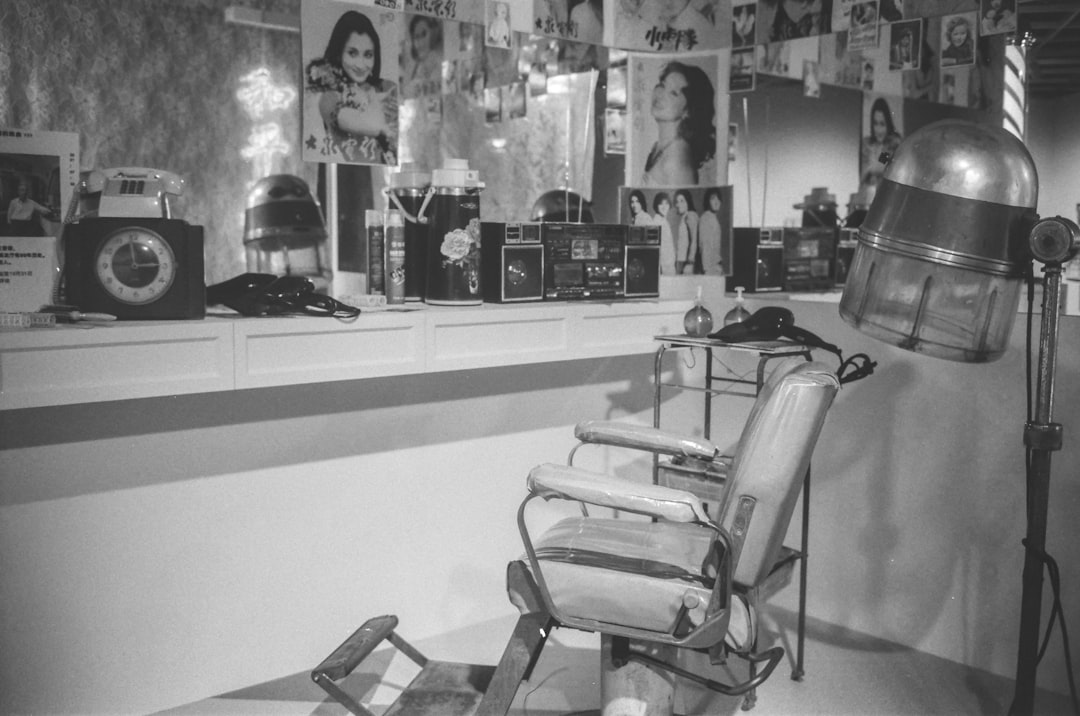
Sustaining loyalty is difficult when the salon experience is fragmented by analog processes. Paper loyalty cards cannot validate who scanned, generic flyers do not tell you what interests clients, and manual appointment reminders come too late. QR codes close this gap by turning mirrors, menus, and receipts into digital gateways that assign each interaction to a client profile, trigger automations, and inform your next move.
The strongest QR strategies replace outdated workflows with measurable, client-centric moments. For example, swap punch cards for a dynamic loyalty portal, replace paper feedback forms with one-scan surveys linked to Google reviews, and add scan-to-book options everywhere intent is high. These changes not only remove friction for clients, they also provide the salon with real-time insights that boost retention and increase basket size.
- Digitize loyalty enrollment: Replace printed cards and manual sign-ups with QR-powered portals that assign every scan to a unique profile. Clients see their status, perks, and progress in one place, while your team gains a clear view of who engages and when.
- Define outcome-centric KPIs: Measure more than sign-ups. Track first-to-second visit conversion, scan-to-book rate, review completion, and upsell acceptance. These indicators show whether engagement is translating into revenue and retention.
- Place QR codes where intent peaks: Use checkout counters, treatment stations, mirrors, and retail displays to meet clients at meaningful moments. Each scan becomes a trackable touch that supports next-step actions like booking, rating, or purchasing.
- Instrument tracking from day one: Monitor not only scan volumes but downstream actions. Tag new-client discovery, returning-client engagement, and product-interest scans separately to see which paths create the best outcomes.
By enabling salons to digitize and personalize their loyalty efforts, advanced QR platforms like Sona QR offer a scalable solution. They minimize missed opportunities, align teams around measurable goals, and automate the follow-up that turns a single scan into a stronger relationship.
Why Do QR Codes Matter for Beauty Salons?
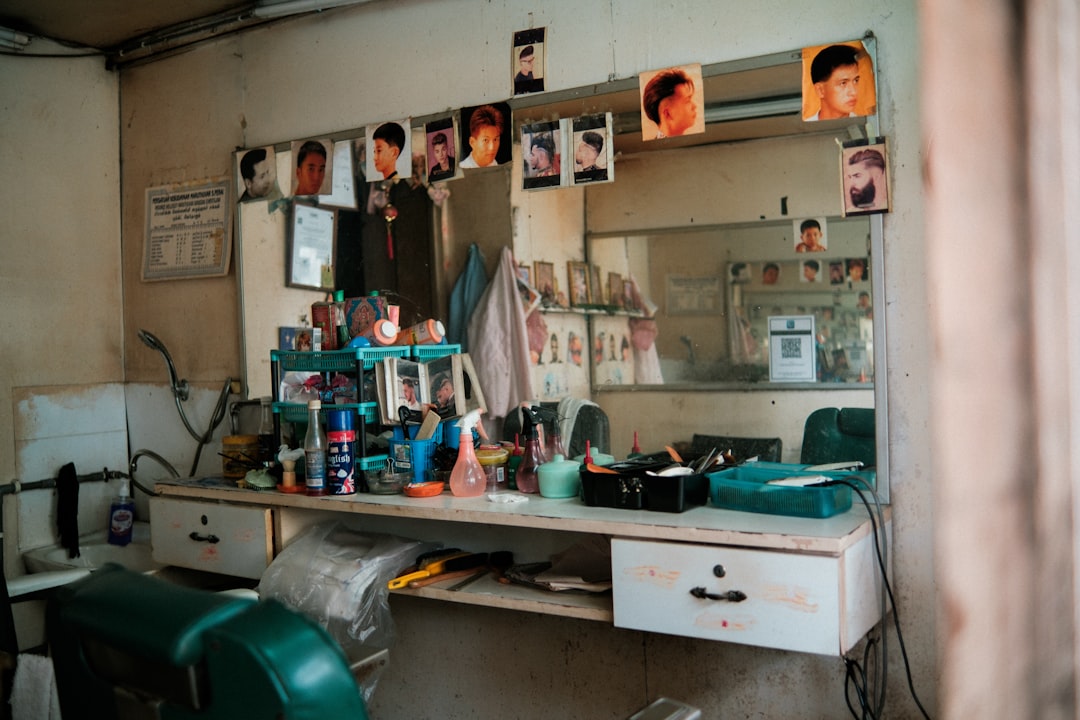
Beauty salons operate in a high-touch environment where purchase intent is often fleeting. A client sees a retail product while waiting, feels inspired to try a new service during a consultation, or is happiest right after checkout. Without a frictionless way to act in the moment, the opportunity disappears. QR codes provide the missing link by letting clients respond instantly to what excites them and by giving salons a measurable record of that interest.
Another common problem is the offline-to-online gap. Appointment cards, brochures, seasonal signage, and window posters create awareness but rarely produce measurable engagement. QR codes solve this by turning every print asset into an interactive entry point. Salons can update promotions without reprinting, collect reviews while the experience is fresh, and invite clients to join a loyalty program with one scan. The result is a connected journey that reduces drop-off and supports personalization at scale.
- Bridge offline to online: Add QR codes to appointment cards, mirror clings, and service menus. One scan captures interest and launches clients into a mobile-friendly, updateable experience. This replaces guesswork with data you can use.
- Speed up actions without apps: Clients scan, book, and redeem without downloads or complex forms. Reducing friction increases conversion and makes engagement accessible to everyone.
- Adapt offers dynamically: Use dynamic QR codes to change landing pages and promotions based on seasonality or inventory. Avoid stale print by keeping the digital destination fresh.
- Gain actionable analytics: Replace blind spots with insight. Track scans by time, device, and location to see which placements, staff stations, or campaigns actually drive results.
- Scale cost effectively: QR codes are affordable to produce and deploy. They work across retail areas, chairs, and windows without expensive hardware or complex re-training.
For salons contending with inconsistent messaging or data silos, QR codes serve as the connective tissue. They unify brand, measurement, and client experience in a way that is easy to roll out and straightforward to optimize.
Common QR Code Formats for Beauty Salon Use Cases
The most effective salon programs pair the right QR format with the right client moment. Think in terms of the action you want and choose a code type that removes friction while capturing data. Dynamic codes are typically the best choice for campaigns that will evolve or require attribution. Static codes are fine for permanent resources like Wi-Fi.
Start by mapping your most frequent interactions: booking, rewards, reviews, product education, and contact saving. Then assign a QR format to each action so the journey is clear and convenient.
- Web links: Drive scanners to landing pages for loyalty dashboards, appointment scheduling, service menus, or video tutorials. Web links suit most salon placements, including mirrors and retail displays, because they support rich content and tracking.
- vCards: Let clients and VIP guests save your salon contact details with one scan. Use these on appointment cards, referral vouchers, and stylist business cards to make future contact frictionless.
- Digital forms: Replace paper surveys and consultation forms with mobile-friendly forms, such as Google Forms, that sync to your CRM. Short forms convert better. Use conditional logic to minimize fields and speed completion.
- Wi-Fi access: Provide guest Wi-Fi via QR so visitors connect in one scan. Add a post-connect landing page with a soft CTA, such as joining the loyalty program or browsing new services.
- App downloads: If your salon has a mobile app, use QR to auto-detect device type and send clients to the correct store. Place these codes on receipts and in waiting areas to encourage adoption.
Dynamic QR solutions stand out because they allow updates without reprinting, support A/B testing, and integrate with attribution tools. For campaigns that require performance tracking or frequent offer changes, dynamic is the safer long-term choice.
Where to Find Growth Opportunities
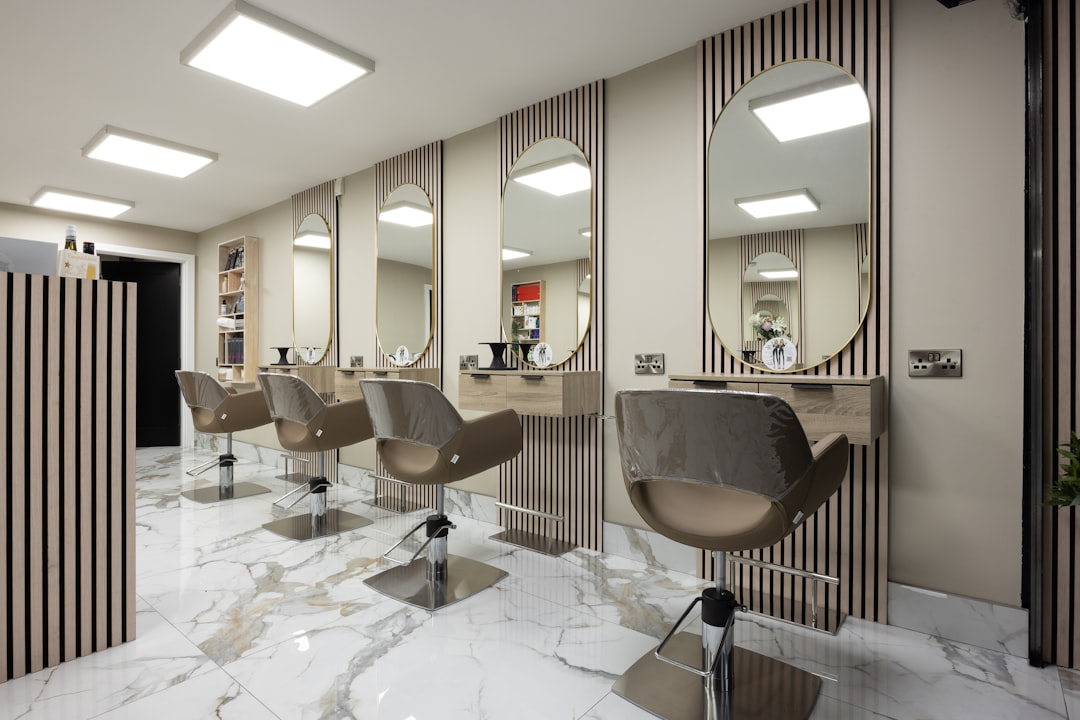
Growth is unlocked when salons deploy QR codes where intent is strongest and visibility is highest. Think beyond the obvious poster near reception. Consider how each surface and moment can serve as a gateway to the next action. Measure outcomes so you know which placements matter most.
A simple rule helps: place a QR code wherever a human asks for information or tries to complete a task. If they reach for a phone or a brochure, give them a scan-to-solve alternative.
- Appointment cards and receipts: Add scan-to-rebook and scan-to-loyalty options. This transforms fleeting post-visit intent into measurable actions and lowers the friction that causes missed appointments.
- Retail product displays: Use QR to show how-to videos, bundle offers, or reorder incentives. You will learn which products attract attention and which promotions lead to conversion.
- Reception and checkout: Turn payment moments into data-rich interactions. Clients can leave a review, join the VIP list, or follow social channels. Combine this with a small incentive to increase participation.
- Windows and posters: Capture walk-by interest from people who may not step inside. Scan-to-book or scan-to-offer codes on windows help you identify prospects who were previously anonymous. Use posters in well-lit areas with clear benefit statements.
- Events and trade shows: Equip booths and pop-up stations with clear, benefit-driven QR codes. Scans populate segmented lists for targeted follow-up, not just raw attendance counts. Consider trackable giveaways to boost participation.
Salons that align placement to client intent see higher conversion rates and better data quality. Plan for visibility and lighting, provide a clear benefit-oriented call to action, and ensure landing pages are optimized for mobile and speed.
Use Cases for QR Codes in Beauty Salons
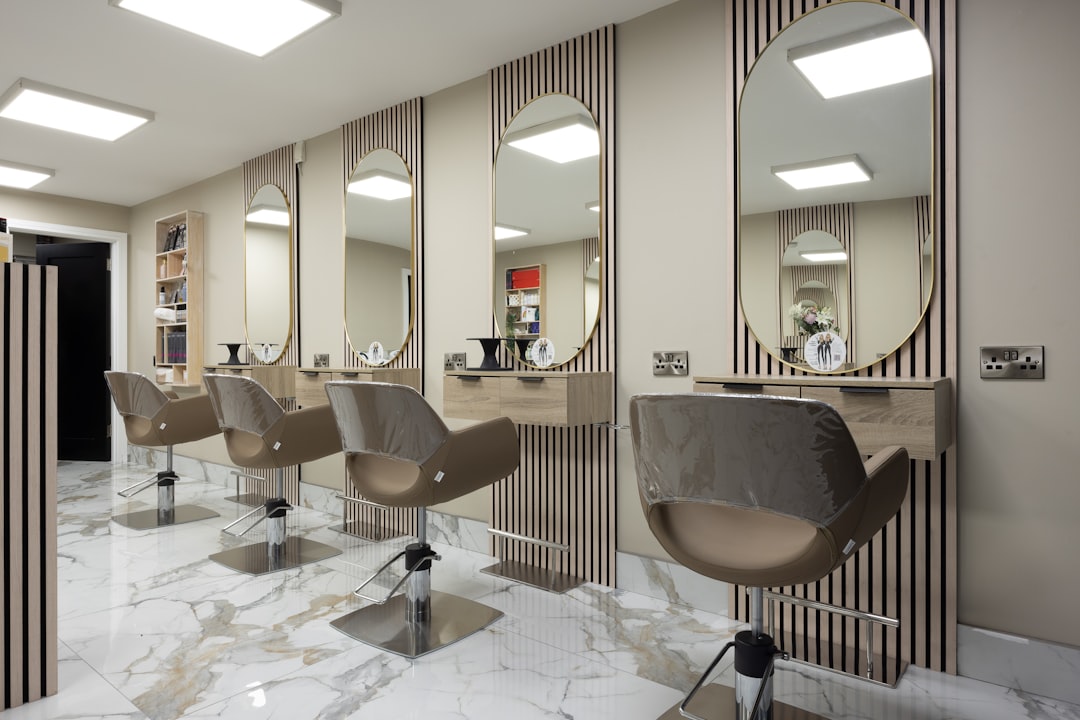
Your best opportunities usually align with the highest-value actions: booking, loyalty, feedback, and retail. QR codes let you connect these actions to timing and context, creating a more personalized experience while capturing signals that feed your marketing engine.
Treat each use case as a mini funnel. Clarify the desired outcome, design the right landing page, and build follow-up automation to continue the conversation after the scan.
- Loyalty rewards access: Place a code on mirror clings and on the back of receipts that opens a client’s reward dashboard. Clients can see points, claim perks, and receive tailored add-on offers. Over time, you will lift visit frequency and average order value while phasing out lost punch cards.
- Instant appointment booking: Add scan-to-book on end-of-service signage and posters near exits. Clients act when intent is highest, and you capture the source of the booking. This reduces call volume and increases the percentage of clients who rebook before leaving. Highlight key services on your service menus to guide choices.
- Feedback and Google reviews: Present a scan-to-review code after payment or at the stylist chair as the service wraps up. Use a short survey with a gate to route satisfied clients to public reviews and dissatisfied clients to a private escalation form. This boosts testimonials and lets you address issues before they become churn.
When these three use cases are live and measured, you will have a reliable foundation for loyalty growth. Expand to retail education, VIP events, and seasonal promotions as your team builds confidence.
How to Build High-Value Audiences for Retargeting with QR Code Campaigns
Every scan is a behavioral signal. It tells you what the client cares about, where they are in the journey, and what channel influenced them. By deploying unique QR codes across moments and locations, you can segment automatically and personalize follow-up at scale.
Think about audience segmentation in three dimensions: who scanned, where they scanned, and what they scanned. This allows you to match messaging to intent instead of relying on generic remarketing that wastes budget.
- Segment by client type: Identify first-time visitors, returning clients, loyalty members, and lapsed customers. Use different QR codes or parameters for each group so you can tailor incentives. For example, a first-time visitor might receive a new client bundle, while a loyalty member sees an exclusive add-on.
- Map journey stages: Associate codes with awareness, consideration, and conversion moments. A scan on a window poster suggests early interest. A scan at checkout implies readiness to rebook or review. A scan in the retail area indicates product curiosity. Message accordingly.
- Track channel and context: Distinguish in-salon scans from those originating in direct mail, Instagram Stories, or event booths. Time of day and day of week can also influence follow-up. Weekend scanners might respond to Sunday evening booking prompts.
- Sync to CRM and ad platforms: Use a platform like Sona QR to pass scan data into HubSpot, Salesforce, or Meta Ads. Trigger emails, SMS, or retargeting audiences based on the exact content scanned and the client’s known profile.
By turning scans into structured audience tags, you improve conversion efficiency and reduce the overlap that causes fatigue. Start with two or three high-value segments and expand as you learn what drives repeat business for your salon.
Integrating QR Codes into Your Multi-Channel Marketing Mix
QR codes act as connectors across your print, in-salon, social, and event efforts. They make every channel measurable and give clients a consistent way to take action without friction. The key is to design a unified experience where each touchpoint advances the journey.
Build a simple offline-to-online funnel: awareness through posters or direct mail, consideration through service menus and video tutorials, and conversion through booking or loyalty enrollment. Use unique codes to attribute results by channel with offline attribution and to personalize follow-ups.
- Brochures and print collateral: Add scan-to-book and scan-to-learn codes to service menus, stylist lookbooks, and new-client packets. Each scan shows which services attract interest and which pages of a brochure drive action.
- Social media and UGC campaigns: Use QR codes on event signage, photo backdrops, or swag to encourage client-generated content and contest entries. Scans tagged from social contexts feed audiences for future promotions and referral programs.
- Direct mail: Include personalized QR codes on postcard promotions for seasonal offers or reactivation campaigns. You gain clear attribution and can tailor the landing page to the recipient, such as showing the stylist they last saw or the service they rated highly. Learn more in this direct mail use case.
- Digital signage and video: Add QR overlays to in-salon screens that link to tutorials, bundles, or instant booking for the service being featured. Reduce friction by letting clients act while they are inspired. See ideas for digital signage.
- Conferences, trade shows, and local events: Equip your booth or pop-up with distinct QR codes for giveaways, consultations, and VIP access. Assign tags by location and time to keep follow-up highly relevant.
When QR codes are integrated across channels, your marketing becomes orchestrated rather than disjointed. With a centralized platform like Sona QR, you can manage all codes, monitor performance, and sync data into your CRM and ad tools for continuous optimization.
Step-by-Step QR Campaign Execution Checklist
Industry experience shows that inconsistent deployment and weak measurement are the main reasons QR initiatives underperform. A clear, repeatable process helps your team launch with confidence and learn quickly from real-world results.
Use the following steps as a blueprint for your salon. Each step includes examples and best practices tailored to common beauty scenarios.
Step 1: Choose Your Use Case
Start by picking one high-impact outcome. Focus is your friend. Select a use case that fixes a visible bottleneck, such as low rebooking rates or a lack of fresh reviews after services.
- Define the goal: Choose a measurable objective like increasing rebookings by 20 percent, collecting 50 new Google reviews in a month, or driving 30 percent more loyalty sign-ups.
- Pick the moment: Align the code with a moment of high intent, for example the stylist chair before blowout, the checkout counter, or the retail area.
- Add a salon-specific example: Plan a QR-driven VIP feedback loop at your next weddings or prom prep event. Scans trigger segmented nurture flows and personalized post-event offers.
Step 2: Pick a QR Code Type
Select the format that best fits your goal. Consider whether you need flexibility, measurement, and the ability to update destinations without reprinting.
- Static code for fixed resources: Use static codes for Wi-Fi instructions or a permanent service menu PDF. These links rarely change and do not require detailed tracking.
- Dynamic code for campaigns: Choose dynamic codes for all promotional, loyalty, and review efforts. Dynamic codes support tracking, A/B testing, and easy landing page updates.
- Plan for data: If you care about retargeting, device insights, or location reporting, dynamic codes paired with UTM parameters are non-negotiable.
Step 3: Design and Test the Code
A well-designed QR placement is scannable, on-brand, and clearly communicates the value of scanning. Do not assume people know what they get from a scan. Tell them.
- Brand the visual: Add your logo, use brand colors in the frame, and maintain adequate contrast. Include a short, benefit-first call to action such as Scan to book your next visit or Scan to grab your 10 percent loyalty bonus.
- Design for the environment: Consider lighting, glare, and distance. Mirror clings need larger codes and high contrast. Countertop placards should face clients during checkout.
- Test across devices: Scan at different angles, distances, and lighting conditions on both iOS and Android. Validate that the landing page loads quickly and looks great on mobile.
Step 4: Deploy Across High-Impact Channels
Roll out in stages so you can learn quickly and improve with each wave. Start where the benefit is obvious and the environment is controlled.
- In-salon placements: Use mirrors, stylist stations, checkout counters, and product shelves. Provide staff with a script to introduce the QR benefit naturally.
- Out of salon placements: Add codes to direct mailers, sidewalk signs, and event materials. Use channel-specific codes so attribution is clear and follow-up can be tailored.
- Match placement to behavior: Place scan-to-review at checkout, scan-to-book on appointment cards, and scan-to-learn near new arrivals in the retail area.
Step 5: Track and Optimize
Measurement turns experiments into wins. Watch behavior end to end and iterate quickly based on what you learn.
- Instrument analytics: Use Sona QR to track scans by placement, time, device, and campaign. Add UTM parameters to tie scans to acquisition or retention efforts.
- Monitor conversion actions: Track scan-to-booking, scan-to-review, and scan-to-reward redemption rates. Watch where people drop off on the landing page.
- A/B test and iterate: Test calls to action, incentives, and visual frames. Move underperforming placements and scale up those that outperform your baseline.
Tracking and Analytics: From Scan to Revenue
Marketing only proves its value when it connects to outcomes that matter: bookings, retail sales, retention, and lifetime value. QR codes shine when paired with analytics that follow the journey from first scan to repeat purchase. Without this end-to-end view, you only know that someone was interested, not whether that interest became revenue.
Modern platforms close the loop by enriching scan activity with identity, channel, and lifecycle context. As a result, you can see which placements contribute to bookings, where to double down, and how to personalize outreach for maximum impact.
- Track every scan: Capture time, device, location, and source for each code. Use this to understand peak engagement periods and your most productive surfaces.
- Measure engagement by channel: Compare performance across in-salon, direct mail, social, and event placements. Allocate budget toward the channels that drive bookings and reviews, not just scans.
- Respond in real time: Optimize while campaigns run. If a landing page shows high bounce rates, adjust copy, add a stronger incentive, or simplify the form on the spot.
- Sync with your CRM: Use Sona QR to automatically enrich contacts in HubSpot or Salesforce with scan activity. Trigger workflows like rebooking reminders or product education series based on real behavior.
- Attribute revenue: Connect scans to known buyers through identity resolution and multi-touch attribution. See how QR engagement contributes to pipeline and closed revenue across multiple touches.
- Unify fragmented touchpoints: Link QR scans with website visits, ad clicks, email engagement, and CRM milestones to build a full picture from first scan to upsell.
When scans, actions, and revenue are tied together, salons gain the confidence to scale QR programs. You will know which campaigns should grow and which should sunset, leading to smarter spend and stronger outcomes.
Tips to Expand QR Success in Beauty Salons
Scaling success is about refining what works and operationalizing the follow-up. Focus on tactics that increase participation, improve attribution, and keep the conversation going after the scan.
As your program matures, use automation to play offense. The more timely and relevant your response, the more likely it is that a single scan becomes a loyal relationship.
- Differentiate by placement: Create unique codes for mirrors, menus, receipts, windows, and direct mail. This reveals where engagement is strong and where potential is being missed, guiding resource allocation.
- Layer UTM parameters: Add source and medium tags to every QR destination. Your analytics will show whether a scan came from a window poster, a checkout placard, or a stylist station, enabling precise optimization.
- Automate follow-up flows: Trigger immediate responses such as booking confirmations, loyalty status updates, or thank-you messages. Automatic outreach reduces post-visit drop-off and adds a personal touch at scale.
- Enable staff to promote scanning: Provide short scripts so stylists and front desk staff can explain benefits quickly. For example, Mention that scanning this card guarantees your points are saved and unlocks a free add-on next visit.
- Experiment with creative placements: Put QR codes on gift cards, welcome packets, and product packaging. Offer trackable referral incentives and reorder bonuses that encourage sharing and repeat purchases.
With a platform like Sona QR handling code management, analytics, and CRM sync, you can test boldly, measure accurately, and double down on the tactics that boost retention and lifetime value.
Real-World Examples and Creative Inspiration
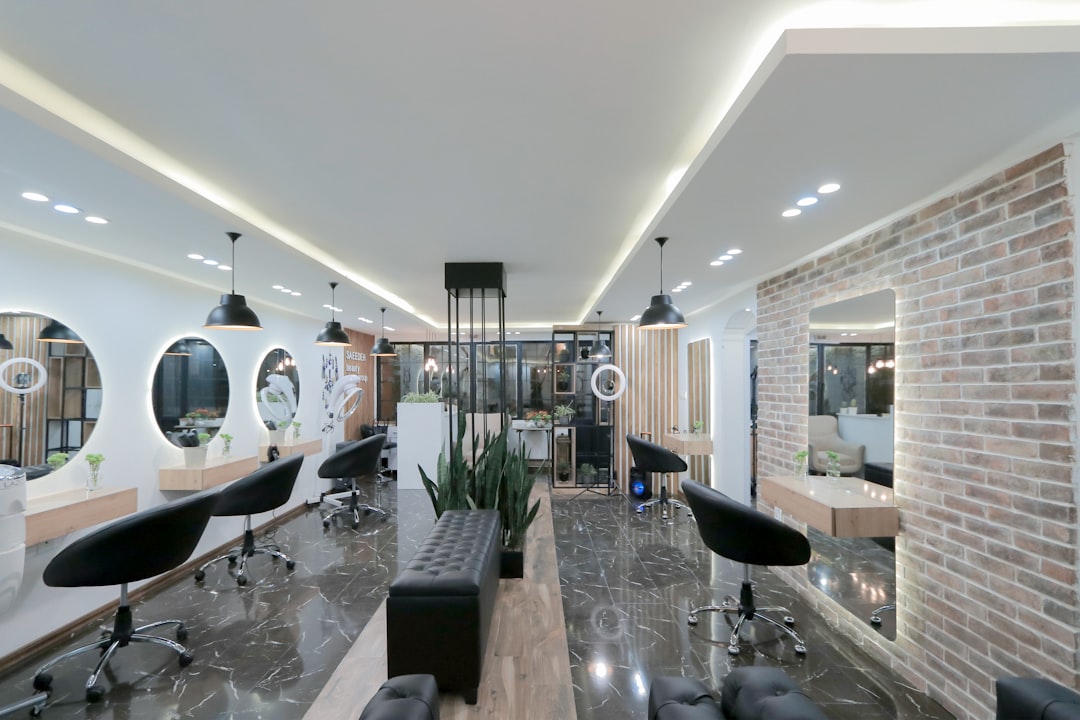
Case studies and on-the-ground experiences show how QR programs translate into business impact. The guiding thread is consistent: make scanning obviously valuable, measure every step, and feed that data back into the client journey.
Use these scenarios as inspiration, then adapt them to your salon’s brand, client base, and service mix. For more inspiration, explore this overview for salons and studios.
- Replacing lost punch cards with mirror codes: An urban salon moved rewards to QR-based mirror cards. Clients scanned to see points and claim perks while sitting at the chair. Repeat appointments rose by 32 percent and high-fit prospects became visible to the marketing team for the first time.
- Appointment cards tied to CRM: A national chain printed scan-to-book codes on appointment cards that updated CRM records upon scan. The team identified at-risk clients and sent timely offers, reducing no-shows by 18 percent.
- Social to in-store handoff: A luxury spa used Instagram Stories and pop-up event QR codes to turn hype into foot traffic. Thousands of new clients scanned, joined segments for remarketing, and were nurtured into bookings.
- Chairside review capture: Stylists prompted clients to scan a review code during the finishing touches. Feedback that once went uncollected became a steady stream of testimonials. As one stylist noted, One scan in the chair gets us reviews we used to miss entirely.
- Account-status matched offers: Salons that matched QR experiences to client status saw stronger retention and more precise upselling. Lapsed clients received bounce-back bundles. VIPs accessed priority booking through exclusive codes. The result was a measurable lift in lifetime value.
These examples underline a simple truth. The most successful QR deployments connect a clear client benefit to a moment of intent, then translate that engagement into structured data that fuels marketing and operations.
Expert Tips and Common Pitfalls
Operational excellence turns a good QR idea into consistent business results. Teams that plan for scannability, clarity, security, and integration avoid the missteps that cause campaigns to stall.
Before scaling, pressure-test your process. Confirm that every scan leads to a fast-loading page, every action is tracked, and every piece of data syncs to a system that can trigger next steps.
- Optimize visibility and clarity: Place codes at eye level, avoid reflective surfaces, and provide a benefit-first call to action. Poor placement is the top reason for low scan rates.
- Tie each code to a real offer: Generic codes without a clear benefit perform weakly and collect poor-quality audiences. Offer something specific such as an instant perk, a VIP booking window, or a how-to tutorial.
- Train frontline staff: Teach stylists and reception to introduce QR benefits in a sentence or two. Inclusive training ensures clients of all comfort levels can participate and that data capture does not rely on chance.
- Keep security and privacy front of mind: Use secure, privacy-first platforms. As your QR program collects more data, assess encryption, access controls, and storage practices with a cybersecurity advisor.
- Integrate with salon systems: Connect QR campaigns to salon management software and analytics tools so engagement signals are visible in real time. Avoid manual imports that delay insights and weaken profiles.
- Segment by behavior, not assumptions: Use analytics to identify frequent scanners or high-value product explorers. Tailor remarketing and offers to these groups for better ROI with less waste.
QR codes are changing beauty salon marketing by converting in-person moments into digital opportunities for engagement, loyalty, and growth. With strategic placement, staff alignment, and robust tracking, every scan can become a step toward retention and measurable ROI. Unified platforms and ongoing optimization keep the journey seamless for clients and efficient for teams, ensuring salons thrive in a data-driven future. Start creating QR codes for free.
Conclusion
QR codes have revolutionized beauty salons by transforming loyalty programs into seamless, engaging experiences that drive repeat visits and boost customer retention. By integrating QR codes, salons can effortlessly reward loyal clients, personalize offers, and gather valuable insights to tailor services—turning simple interactions into meaningful connections.
Imagine instantly recognizing your best clients, rewarding them with exclusive perks, and encouraging new customers to join your loyalty program—all while tracking engagement in real time. With Sona QR, you can create dynamic, trackable QR codes that update instantly without reprinting, linking every scan directly to your revenue growth and customer satisfaction metrics. No guesswork, just smart, data-driven loyalty marketing.
Start for free with Sona QR today and transform every customer visit into a powerful loyalty-building opportunity that keeps clients coming back for more.
FAQ
How can QR codes improve the customer experience in beauty salons?
QR codes enhance the customer experience by enabling instant booking, digital loyalty rewards, and real-time feedback collection, creating a seamless and personalized journey that reduces friction and increases engagement.
What are the different ways QR codes can be integrated into a salon's operations?
QR codes can be integrated on mirrors, appointment cards, receipts, retail displays, checkout counters, windows, and event booths to facilitate booking, loyalty enrollment, feedback collection, product education, and contact sharing.
How do QR codes help in streamlining salon payments and bookings?
QR codes placed at checkout or on appointment cards allow clients to book their next visit instantly and provide feedback, reducing call volume and no-shows while capturing the source of bookings for better tracking.
What are the benefits of using QR codes for salon marketing?
QR codes turn offline print materials into measurable digital touchpoints, enable dynamic offer updates, provide actionable analytics, support multi-channel attribution, and allow personalized follow-up to boost retention and revenue.
How can QR codes help salons to manage customer feedback and reviews?
Salons can use QR codes for scan-to-review surveys that route satisfied clients to public reviews and dissatisfied clients to private escalation, increasing testimonials and enabling timely issue resolution to prevent churn.





















